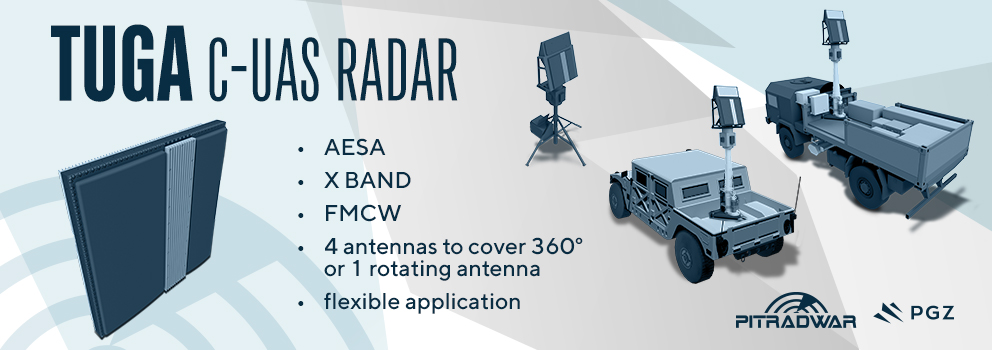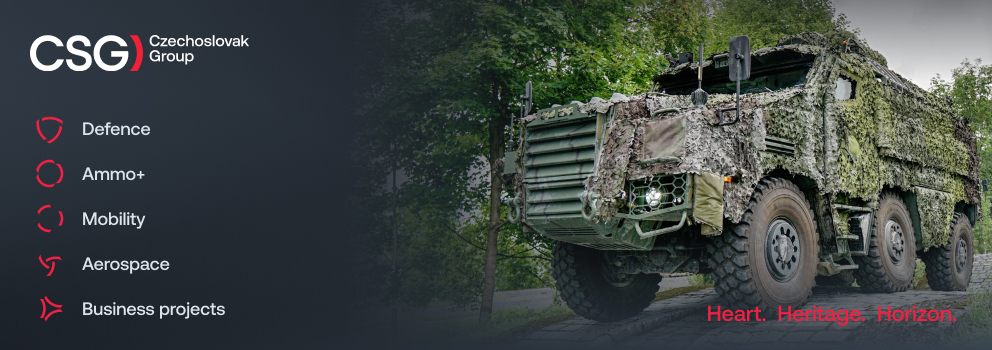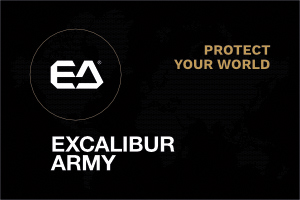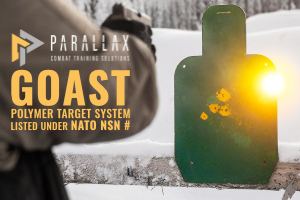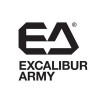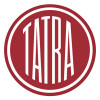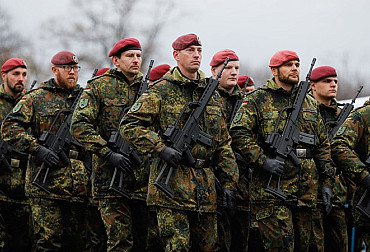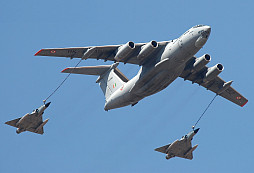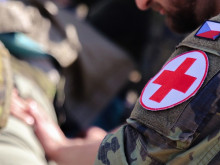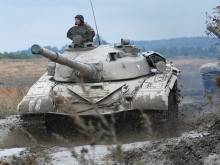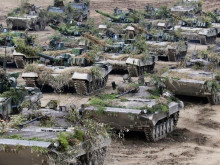Gen. Petr Šnajdárek: The Signal Corps has undergone a fundamental transformation over the past decade
The war in Ukraine has clearly demonstrated the importance of connectivity, cyber defence, network resilience and decentralised command capabilities. We discussed the current state of our communications forces, what they are lacking, the extent to which the Czech Republic is self-sufficient in the field of communications, and how the ‘New Generation Communications Forces’ campaign is progressing with Brigadier General Petr Šnajdárek, Director of the Ministry of Defence's Communications and Information Systems Section.

General, how would you assess the recent largest exercise of the Federated Cloud 2025 communications forces?
The Federated Cloud 2025 exercise was undoubtedly one of the key milestones in the development of the capabilities of the Signal Corps, not only within our armed forces, but also within the broader alliance cooperation. The aim was to verify whether communication and information resources are capable of being deployed effectively in an international environment – from strategic headquarters to individual soldiers in the field – in accordance with NATO FMN (Federated Mission Networking) standards, which is a key capability focused on interconnecting technologies and supporting command, control and decision-making in military and non-military operations. Over 1,300 specialists from several NATO member states took part, and we simulated an extensive operational scenario with elements of electromagnetic warfare, cyber attacks and the unavailability of civilian infrastructure. The aim was to verify the interoperability of communication and information systems across Alliance units in an environment that faithfully reflects the conditions of modern conflicts. In my view, it was a very successful exercise, which demonstrated that our communications units are capable of responding flexibly, communicating effectively and keeping pace with the latest technologies, while also identifying specific areas where we need to focus further modernisation efforts. This year's exercise saw the first deepening of military-civilian cooperation and data exchange between the army, the Czech Armed Forces Radio Club and the Fire and Rescue Service. This cooperation is crucial, especially for dealing with non-military crises. Among other things, soldiers tested communications during a mobile operator service outage, replicating a situation that occurred during last year's floods.
How much has the Signal Corps changed in recent years?
The Signal Corps has undergone a fundamental transformation over the past decade. It is no longer just about voice communication – today we secure extensive networks for command and control, including satellite communications, intelligence, reconnaissance and cyber defence. The pressure to operate in real time, with a high degree of resilience and security, has forced us to rethink our system architecture and personnel training. Today, the emphasis is on centralising the management and operation of information systems, their redundancy, their ability to operate even in the event of infrastructure failure, and their ability to respond immediately to cyber threats. Furthermore, the greater integration of civilian technologies into military systems places an emphasis on security and interoperability, which are key issues today from the perspective of technology supply security.

How does our Signal Corps compare to that of our allies?
The Czech Army's Signal Corps is currently well integrated into Alliance structures and capable of performing tasks alongside NATO member states' units. We have experienced personnel, well-established training centres and continuously modernise our equipment. In many respects, particularly in tactical communications and operational headquarters support, we are at a very solid level and, in some areas, such as electronic warfare and mobile communications, we are ahead of more advanced countries in terms of technology. In other areas, we are procuring technologies, including with the involvement of Czech industry, that are fully interoperable and comparable with those of our allies.
However, challenges remain, for example in the full digitisation of command and control processes, the automation of information processing, and the ability to operate in hybrid conflict conditions. If we want to keep pace with the technological leaders in the Alliance, we need to accelerate the implementation of certain systems and streamline the process of introducing new technologies. Overall, it can be said that new technologies such as artificial intelligence, big data, robotic or autonomous systems place great emphasis on the integration of sensors and weapon systems with the need to ensure their interoperability over time as they are procured by the Czech Army. This places great emphasis on the capabilities of personnel, but also on the supply chain.
What technologies do you consider key to modernisation in the field of communication and information systems (CIS)?
I consider three areas to be absolutely essential: the first is software-defined radio stations, which enable frequency adaptation, encryption and interoperability across coalition partners. The second area is data and voice networks capable of operating even in environments with disrupted infrastructure, including tactical network solutions such as MANET. The third pillar is C2/C4ISR systems, i.e. the ability to collect, process and transmit information in real time, including artificial intelligence elements that aid decision-making. Furthermore, there are satellite technologies, application and presentation layers (software tools for fast and accurate transmission and display of information) and, last but not least, so-called breakthrough security technologies for data and information protection, such as the implementation of quantum technologies. Without these technologies, the military will not be able to plan, respond or operate effectively on the modern battlefield.
What lessons can the Czech Armed Forces learn from the defence of Ukraine?
The conflict in Ukraine has clearly demonstrated the importance of securing a robust command and control system for the timely transmission of data and information, cyber defence, network resilience and decentralised command capabilities. Flexibility, adaptability and an innovative approach are key, including the use of commercial technologies such as Starlink satellite services or civilian drones designed for communications, reconnaissance or military fire control via FPV drones. The Czech Armed Forces must learn that classic hierarchical command without autonomy for units in the field is not very effective in rapidly changing conflicts. We need to speed up decision-making processes, expand access to data even on the front lines, and ensure reliable communications even in conditions of electromagnetic warfare and cyber attacks.
How important is electromagnetic warfare and how prepared is the Czech Army for it?
Electromagnetic warfare is now an integral part of every military operation, whether it involves disrupting communications, jamming navigation systems or actively defending against guided weapons. The Czech Armed Forces have made significant progress in this area. We have specialised units that deal with both electronic reconnaissance and operations in the electromagnetic spectrum. However, it should be emphasised that the field of EMB is developing extremely rapidly, which is why we must continue to invest in modern equipment, such as mobile jammers, detection systems and the integration of EMB into standard tactical plans. For example, we need to implement a system-wide interconnection between the Signal Corps, cyber defence and electronic warfare, as the boundaries between these components are becoming increasingly blurred.

Are we returning to wired connections because of electromagnetic warfare?
Yes and no. Even in the 21st century, wired connections still have their place – especially in environments with strong interference or in cases where absolute secrecy is required. In some scenarios, such as staff command in forward bases, we therefore still use mainly optical or metallic networks, which are not so easily detectable and vulnerable to attack. However, modern conflict is mobile, and wireless and mobile solutions are needed. Therefore, the use of cables is not a panacea, but rather a supplement. The key is to have a flexible range of options and the ability to switch between them depending on the situation.
Which is better today – digital or analogue connection?
Digital technologies dominate because they enable encryption, data transfer, greater efficiency and integration into information systems. On the other hand, analogue connections still have their advantages – particularly in terms of simplicity and resistance to certain types of interference or in emergency situations. In some scenarios, it therefore makes sense to retain analogue as a backup or supplementary channel. The ideal solution is a combination – a network that primarily operates digitally but allows switching to emergency analogue mode. Here, too, we are inspired by the conflict in Ukraine, for example.
Is quantum entanglement effective in electromagnetic warfare?
So far, more in terms of potential than practical application. Quantum communication offers enormous potential in the field of security – in theory, it enables absolutely secure communication thanks to the principle of quantum entanglement. The problem is that the technology is still very difficult to implement, limited by distance and requires special infrastructure. However, within the next 10 to 15 years, we expect it to play an important role in strategic communications and the protection of key data transfers, for example between command centres or in nuclear deterrence systems. In electromagnetic warfare, it is therefore more of a promise than a current tool.
To what extent are we dependent on certain resources, such as Harris radio stations? Do we have any alternatives?
Harris radio stations form the backbone of our communications system and are of high quality. However, any such technology carries the risk of dependency. That is why we are simultaneously looking for complementary and backup resources, such as European alternatives or resources compatible with NATO standards. At the same time, we are considering developing our own modular communication platforms in cooperation with Czech companies. This minimises risks such as shutdowns, sabotage or supply problems. Harris will remain an important tool, but not the only one.
Is it still necessary for Harris radio operators to have ‘Secret’ clearance? And isn't that a problem?
Yes, a ‘Secret’ security clearance is required to work with the full set of features on selected Harris radio models. This is because the devices use encryption and classified methods. In certain situations, this complicates the flexible deployment of personnel, but on the other hand, it is standard within NATO. The solution is to divide the functions into layers – normal operating modes available without clearance and advanced functions reserved for designated specialists only. We are already partially implementing this model.
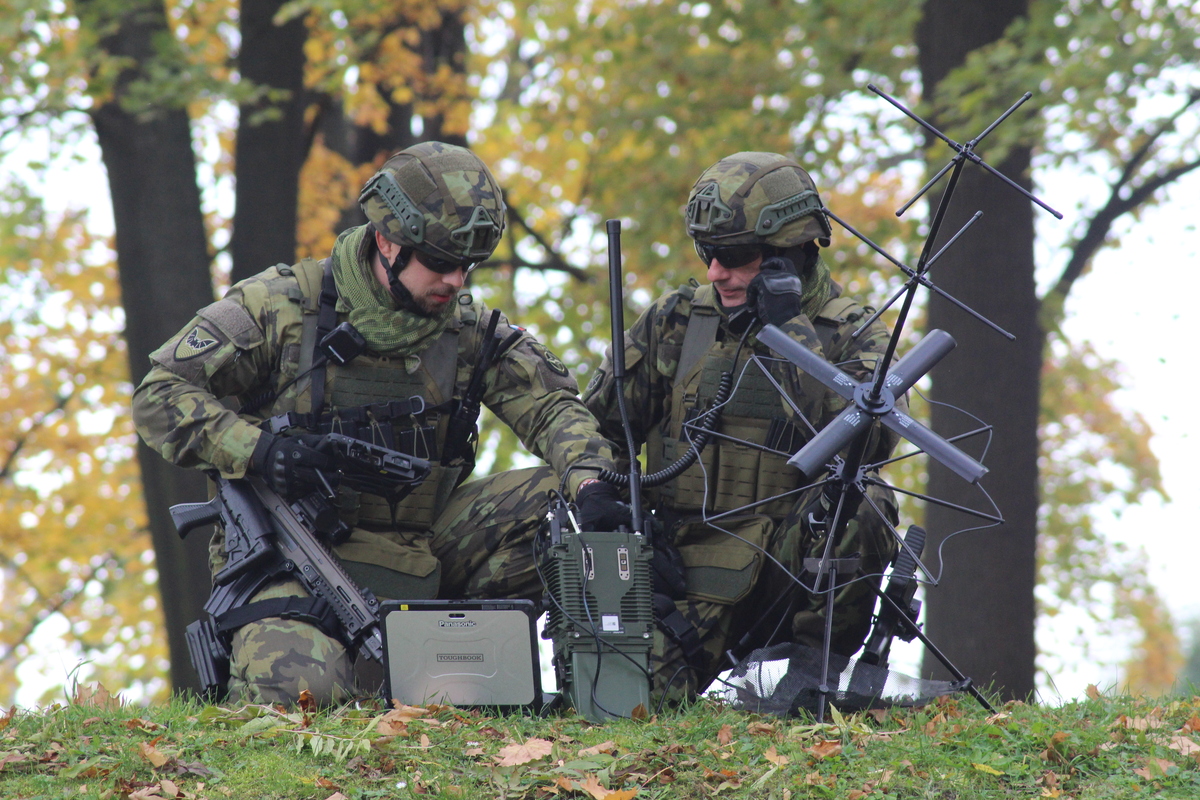
How self-sufficient is the Czech Republic in terms of communications troops?
We have a strong foundation, with Czech companies involved in the development of communications equipment, IT technologies, electromagnetic warfare and dispatching systems. Domestic industry is already capable of supplying complex technologies and robust software solutions, but in areas such as cryptography, satellite communications and software-defined radio systems, we are still more dependent on foreign partners. The aim is to increase the share of domestic production, ideally through development in the Czech Republic and subsequent licensed production.
How does the military work with the civilian sector on new technologies?
Cooperation is key and is gradually deepening. We work closely with companies that supply functional units for all branches of the Czech Armed Forces, but we also cooperate with smaller development companies in the fields of software, satellite reconnaissance and encryption. In recent years, we have also strengthened our contacts with technology start-ups and started using mechanisms such as defence innovation contracts and hackathons. The aim is to speed up the introduction of innovations and enable industry to better understand the specific needs of the army. The Agency for Intergovernmental Defence Cooperation plays an important role in this, and the Ministry of Defence of the Czech Republic is actively creating conditions for the transfer of technology from the civilian to the military sector. Cooperation within the academic environment is also important. We strive to be pioneers in this area, and the cooperation established through the signing of memoranda and agreements is proof of this. One example is gaining access to a quantum computer through a horizontal agreement between the Ministry of Defence/UNOB and the Czech Technical University, including other institutions within the consortium, to solve tasks for the needs of the Czech Army. We are also preparing other scientific projects and new programmes, and I must admit that even though we are still in the early stages, this cooperation is developing very promisingly.
What are your current priorities in the context of the security situation and the development of cyberspace?
We have three main priorities: the first is to protect and develop the army's communication and information systems so that they are integrated under a single security administration and are reliable, resilient and capable of functioning even in conditions of hybrid threats. The second priority is to streamline cybersecurity processes and measures with an emphasis on reducing administration and strengthening real performance, both at the strategic level (e.g. protection of command and weapon systems) and at the level of day-to-day operations. The third area is strengthening human capital – i.e. educating, retaining and motivating experts in fields such as cybernetics, artificial intelligence and data analytics. Our vision is an army capable of conducting modern network-connected conflict with an emphasis on information dominance.
What changes are needed for effective recruitment in the ‘New Generation Signaller’ campaign?
It is not just about appealing to young people, but also offering them a meaningful future. This means a modern working environment, contact with the latest technologies, and opportunities for further education and development. The ‘Next Generation Connectivity Specialist’ campaign aims to do just that – to show that a connectivity specialist is not ‘someone who pulls cables’, but a person who moves between tactical activities on the battlefield, ensuring comprehensive IT services and cloud solutions. However, we also need to change our internal system – for example, by shortening training periods, reducing the administrative burden and allowing experts from the civilian sector to join, even on a part-time basis or as part of the active reserve. Communication must be authentic, specific and supported by real stories in order to highlight the changes that the Czech Army is undergoing thanks to new technologies.
What did the launch of the DoArmády.cz virtual centre reveal, and what are the next steps?
The DoArmády.cz project, or virtual recruitment centre, has shown that modern recruitment must take place not only in recruitment centres but also online. Thanks to this tool, we are able to communicate with candidates immediately, provide them with tailored information, guide them through the entire recruitment process and also test their knowledge and skills online. It has also become clear that digitising recruitment is not only highly effective but also essential – young people expect an online environment, quick responses and a transparent process. We are also implementing links to the internal environment of the ACR, systems and applications for internal use within the ministry, such as the MO personnel system and the filing service, and we are developing training modules for job applicants to the ACR. We are also considering expansion to active reserve units and cooperation with the academic sphere. However, I would like to point out that the virtual recruitment centre is a completely new and unique service for the ministry. It would be wrong to think that its introduction will immediately lead to massive recruitment success for the ministry. What is important for us, however, is that people have taken notice of both the website and the entire service, and we are seeing its impact grow every month in the statistics. I don't know of any other project in the world that has become a huge success in its first year. Just like the so-called Boston Matrix, this service is also evolving. What is important for us is that the number of users and the popularity of this service are growing, which clearly shows that we are heading in the right direction. I welcome constructive criticism, but I would also like to say that we are innovators and visionaries in this field. It is very easy to take over a project that has already been conceived. We are pioneers, and I am sorry that some authors in the media have not understood this. Everything in the world has its time and place.
How often and at what levels does training in CIS and cybernetics take place?
Training is ongoing and takes place at several levels – from basic courses for newcomers to specialised certification programmes for experts. The training courses at the Military Academy in Vyškov, where basic operation and tactical procedures are taught, are key. For advanced students, we offer courses in cooperation with IT service providers, InKyS (Information and Cyber Forces), and we also cooperate with other departmental training centres, the University of Defence and other universities across the Czech Republic. International exercises such as Locked Shields and Cyber Coalition, where specialists are trained in real-life scenarios, are equally important. Similar training is now part of everyday preparation, such as simulated attacks on systems, stress tests and incident response within staff structures. The aim is to make cyber and CIS a fully-fledged operational domain.
How does the army cooperate with the civilian sector on IS? How much do you intervene in the civilian sphere?
Our cooperation mainly takes the form of expert consultations, solution testing and information exchange. We share some communication channels (such as optical lines) with the civilian sector, cooperate in crisis management and participate in exercises such as Cyber Czech. The army does not enter civilian systems arbitrarily; it always does so within the legislative framework. However, when it comes to systems that overlap with the state's security infrastructure (such as energy and healthcare), we try to coordinate procedures. Cyber security is a society-wide issue today, and the army plays a supporting, not a dominant, role in it.
Should the civilian sector also be educated in cyber warfare?
Absolutely. Cyber security is not exclusively a military issue – on the contrary, it often begins in the civilian sphere. If a citizen clicks on a dangerous email or a company fails to back up its data, this can lead to widespread problems, even in public administration. The National Cyber and Information Security Agency (NÚKIB) plays a key role in raising awareness, but the military should also contribute, for example through cooperation with schools, training courses or involvement in national campaigns. Civil defence in cyberspace starts with each individual, which is why we support the development of educational programmes, simulations and interactive exercises for the public.
What is the staffing level in your departments? What skills are most lacking?
Generally speaking, connectivity and cyber units are among those with long-term understaffing worldwide. We are most lacking experts in cyber security, network systems, radio communications, encryption, and crypto asset management. It is not just a matter of a shortage of people, but also that the civilian sector offers more attractive pay. We strive to motivate interested candidates not only financially, but also with meaningful work, opportunities for study, professional growth and involvement in prestigious projects. We are also actively developing the concept of active reserves, where we see potential for civilian IT specialists to participate in the defence of the country without having to leave their professional careers.
On the other hand, a campaign called ‘New Generation Signalers’ has been launched, which has been extremely successful in recruiting signal specialists, especially for the main signal unit, the CIS Agency. In January, I was informed that 92% of the positions designated for recruitment had already been filled. This is truly an extraordinary achievement. The Signal Corps has also created its own personnel incubator at a military secondary school in Moravská Třebová, where we have opened two fields of study, so we can expect that in two years' time, the Signal Corps will have a regular annual intake of at least 50 new signalmen. We also plan to strengthen the fields of study at the secondary military school in Sokolov, which will provide dozens more specialists. We are also in talks with civilian schools where we want to open military courses. If we succeed, the Signal Corps could fully stabilise its personnel situation by 2030 and even have a relatively large surplus. This means that we are not relying on chance or the volatility of the labour market, but are taking care of things ourselves and are successful.
